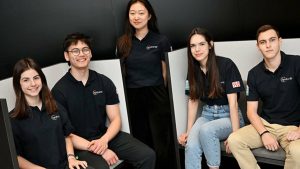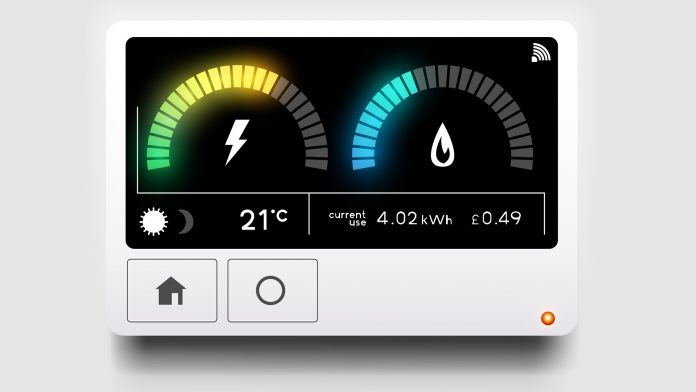Eindhoven University of Technology’s student team SimEnergy is working to develop a device that consistently tracks an individual’s energy consumption.
In order to lower their skyrocketing energy bills, for many households it has become imperative to understand their energy consumption pattern.
Eindhoven University of Technology’s student team SimEnergy is working on a simple, yet effective solution: they are developing a device to be plugged into a household’s smart meter that provides information on the energy consumption of each individual home appliance at any given time.
For Industrial Engineering Bachelor student and founder of SimEnergy David Melamed, it all started from a personal frustration: “Back in our family house in Portugal, we were confronted with extremely high energy bills, without fully understanding where and when we consumed all of that energy. So, when I joined the university’s Honours Academy back in 2021 and was given the chance to come up with my own project, I decided I wanted to develop something to make people aware of which appliances in their homes consumed the most energy, and when.”
He pitched his idea to his fellow students from the energy transition honours track, and three fellow students joined the effort. Under the name SimEnergy they started doing research into the energy industry and into home appliances.
At the moment, the team consists of some ten students from a range of backgrounds and nationalities.

About SimEnergy’s solution
Explaining the idea that forms the foundation under the team’s work, Melamed stated: “There are already dedicated devices on the market you can put in a wall socket to measure the energy consumption of the individual device connected to it.
“In our solution, we take this idea one step further: we start from the total energy consumption as displayed by your smart meter and use AI algorithms to disaggregate that into the appliance level.”
As simple as it might sound, identifying all of the unique fingerprints from all of the individual appliances turned out to be a very challenging problem, he says.
“But luckily, we have a very good team, with people who are skilled at the software and Artificial Intelligence side.”
Identifying the needs of potential users
In parallel, a second part of the team is working on market research to identify the needs of potential users.
Over the past year, energy prices skyrocketed, confronting people with bills that became twice as high as they were used to before. So, if anything, finding a market for their solution shouldn’t be much of a problem, one could think.
Determining the right business case is not that easy though, Melamed illustrates with an example.
“Say that our solution might help you save 10% of your €100 a month energy bill. Besides the one-off investment in the plug-in measurement device, you will probably have to subscribe to a software service to visualise the data and receive advice. If that costs you €5 a month, even if in the end that leads to a net save of €5 a month, the incentive might not be enough to motivate users to undergo a change in behavior. Therefore, it is crucial that stakeholders come together to design a model that significantly lowers the total cost for the end-user.”
Creating awareness around energy consumption
Recently, the team finalised a first prototype of the plug-in device. This first prototype can discern the energy consumption of ten different individual appliances, ranging from washing machines and dryers to dishwashers, microwaves, and ovens. The device now links to a webpage with widgets displaying charts and data.
“The next step we need to take is to translate this complex data into useful visuals that are easy to understand and take action upon.”
In a later stage the team envisions providing automated and personalised advice and in that sense, guide users through a behavioural changing experience.
“In addition, we would like to conduct some pilot studies with actual users to see if our product meets their needs, and if it actually helps them save energy.”
Because that is the team’s ultimate goal, Melamed stresses. “We use data to provide people with practical advice on how they can save money and energy.”
Such advice can roughly take two turns, he further explains. “The first type of advice is aimed at load shifting: if people have an energy contract with variable tariffs, it might be profitable to use a certain device at a different time of the day.
“The second type of advice is about creating awareness of what we call vampire loads. Which devices are using energy without you noticing? And what can you do to prevent them from doing so? Think about unplugging your TV when you’re not watching or taking your computer from the charger once it’s fully charged.
“But we also want to include tips like: ‘We see that your fridge is consuming more energy than the average fridge, perhaps you should do a health check or invest in a new one.’”
All in all, creating awareness is the first step to helping people change their behaviour, Melamed thinks.
“For example, in my own home, I discovered that the small heaters we use to heat our rooms are responsible for more than a quarter of our total energy consumption. So, by simply being more aware of where and when to use them, we managed to save a lot of energy.”









